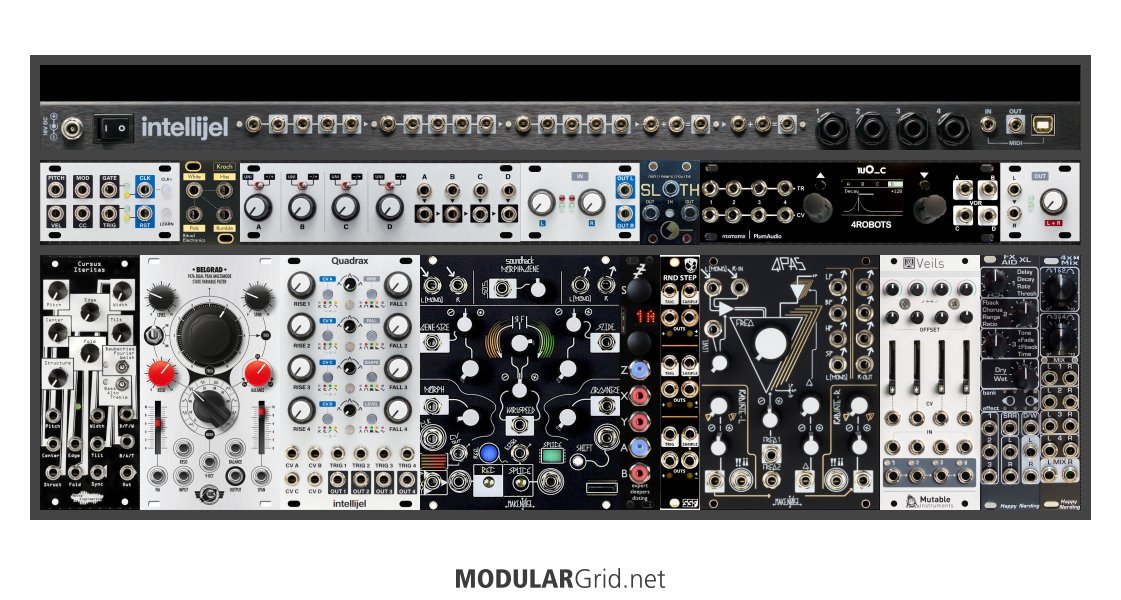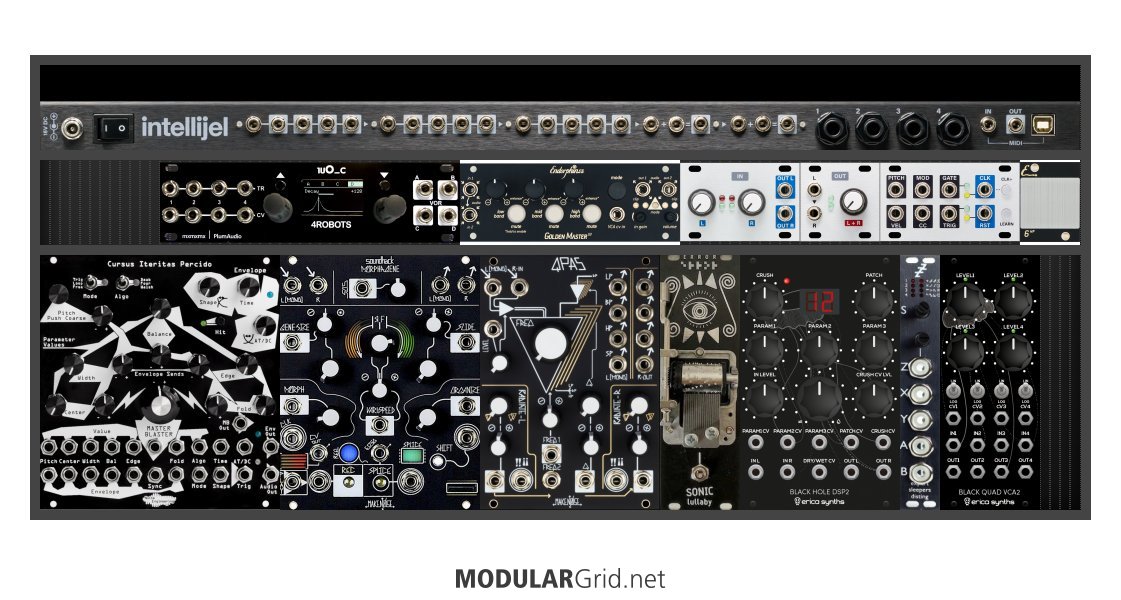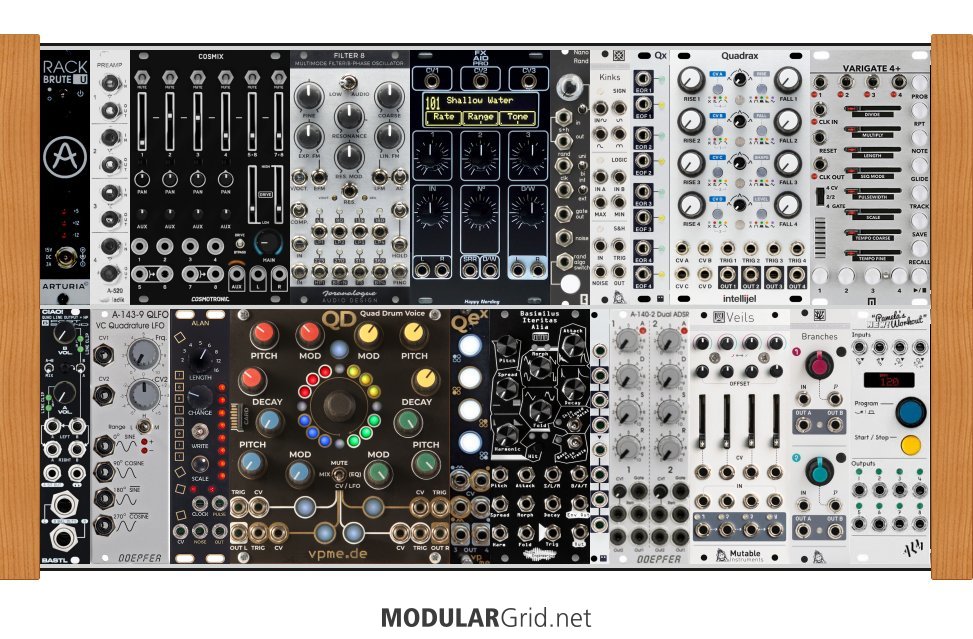I've been planning out a matriarch expander for some time! I bought the small intellijel case too, mostly hoping to add utilities and a few envelopes. Just dug up this forum after I came up with what I think my final skiff will look like, and it seems like we have similar ideas on what to include!
Here's what I have now:
https://cdn.modulargrid.net/img/racks/modulargrid_1694848.jpg
And here's what I'm thinking the final skiff will look like:
https://cdn.modulargrid.net/img/racks/modulargrid_1772099.jpg
Maths is awesome, I use it for slew, pitch envelopes, and extra attenuverters all the time. Massive upgrade for the matriarch on it's own.
I'm hoping to use Pams, The EG's, and LPG's to generate some tempo sync'd goodness while leaving one voice to play around with on the keyboard. The Ladik ADSR's are listed as 45mm deep, and my case is listed at 45.5mm, so hopefully things end up fitting. Twin CV controllable envelopes will be fun for stereo drone patches.
Bi-Fold hopefully will add a bunch more timbers to Matriarch's base sound, seems like a no brainer.
Sloths also seems like an awesome modulation source to add, I've been trying to sum triangle waves and noise to get interesting swells but the sloths seems to do this better.
Couple questions:
Do you use your disting often? I know its very flexible but I am hesitant to incorporate menus and do no need see a great need for effects. If you think it's a lot to learn I may stay away from it.
Are you liking the sloths? The Pams and matriarch both have a lot of modulation generation capabilities, but it seems like the sloths has something unique and worth the HP even in the tiny case.
If you have any opinion on what you would include vs not I'd appreciate the input!



